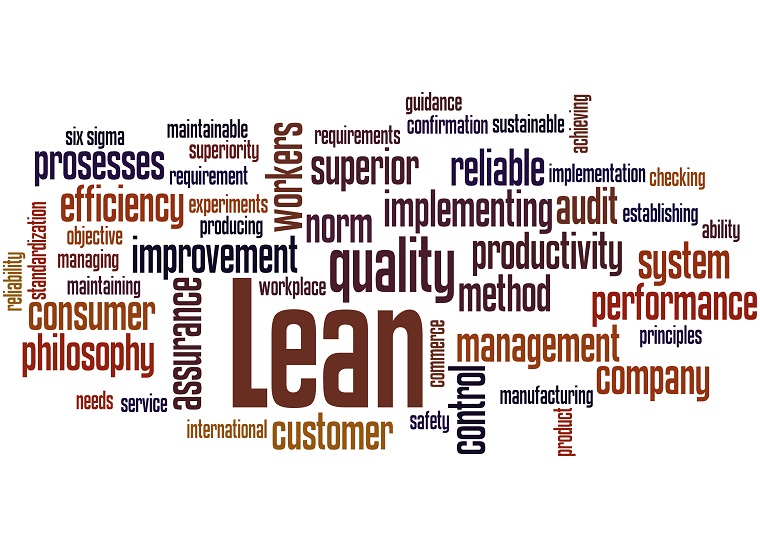Manufacturer Thinks ‘Lean’ to Cut Waste, Boost Efficiency
Nov 11, 2013

In this ongoing series, The Fix, we look to problems faced by real companies and how they solved them.
The Challenge: Manufacturing errors and delays were racking up at NextDayFlyers.com–and founder and chief executive David Handmaker was frustrated. The Rancho Dominguez, Calif. custom printing company had grown to about 70 employees by 2008 and had built its own printing facility. Over time, however, Handmaker noticed an uptick in the amount of waste and production and delivery errors: Too much excess paper was being thrown away in the production of business cards and other print jobs, and production delays and flaws were creeping up. Gross margins shrank. “Sometimes the wrong order was going to the wrong customer,” Handmaker says. “One time we had an order for a nightclub that got delivered to a pastor. That was not our best moment.”
The Fix: Handmaker began doing research on how to improve manufacturing processes in a holistic way. It was recommended that he read the book The Toyota Way: 14 Management Principles from the World’s Greatest Manufacturer, which explains how the automaker used “lean manufacturing” techniques to reduce wasted time and resources and install higher quality-control measures. He was so impressed by the book that he formed a group of managers and asked them to read it and try to deploy such techniques on their teams. However, results were lackluster: “It was like a book club,” Handmaker says, “and we really weren’t successful.” He later brought in consultants, but their recommendations didn’t help much either.
Handmaker decided the best route was to hire a vice president of manufacturing whose job it would be to bolster efficiency at the factory. He and the company’s chief financial officer laid out key skills and qualifications the new VP would need–including an understanding of lean manufacturing philosophy and techniques–and then used a recruiter to find qualified candidates. After getting three qualified leads, NextDayFlyers.com hired Ben Nouri, a long-time auto-industry operations manager who had opened plants in countries around the world using lean-manufacturing techniques.
Nouri, who is now NextDayFlyers.com’sef operating officer, was quick to help the company figure out ways to save time and money. Unlike the consultants, he gave the managers hands-on training on how to use lean manufacturing concepts, including using metrics to assess opportunities for greater efficiency in their area of the business. The managers were taught, for example, what types of metrics they needed to track and how to make a “pareto analysis”–a lean manufacturing technique based on the concept that 80 percent of waste is caused by 20 percent of causes. Managers were asked to identify the top causes of waste in their areas and find ways to address that waste. “It’s very bottom up,” Handmaker says. “People are accountable” for making sure their own job is handled as efficiently as possible.
Thanks to Nouri’s guidance, managers were able to make some significant time and money-saving improvements. For example, they realized that printing press operators were spending more than five minutes walking across the plant to pick up plates they needed. Moving the plates nearby the press operators saved lots of time and made printing jobs run all the more smoothly. The company’s call center was able to reduce call-abandonment rates by analyzing why callers were hanging up and lowering wait times. Nouri helped determine how to minimize paper waste in the production process, saving the company $500,000 a year in paper costs.
Beyond improving efficiency in various areas of the business, Nouri’s focus on lean manufacturing has changed the company culture. The company now has a quality-control department and managers have a “daily huddle” to assure better coordination and work flow between the various groups. Another step: At monthly “operational metrics” meetings, managers lay out action plans for their teams and then report on how well they’re fulfilling those plans. “You’ve got 12 people in a room and everyone has to say what they do” to improve efficiency, Handmaker says.
Since deploying lean manufacturing techniques, NextDayFlyers.com has seen substantial financial and operational improvements, Handmaker says. On-time delivery rates have risen from about 90 percent in 2008 to 99.7 percent today. Gross margins have grown by three to four percentage points. Error rates have dropped, too: Reruns of print jobs have fallen from about 3 percent of sales in 2010 to 1.7 percent today. Equally important, Handmaker says, bringing on Nouri has allowed him to focus more on being a visionary and growing his company–not get too bogged down worrying about operational efficiency. “I can now focus on my job as a leader,” he adds.
The Takeaway: Employing lean manufacturing techniques can help a company reduce inefficiencies and save money.
Original Article: https://www.entrepreneur.com/article/229771
Stay In Touch.
Subscribe to our newsletter and exclusive Leadership content.
We respect your privacy and won’t spam your inbox

